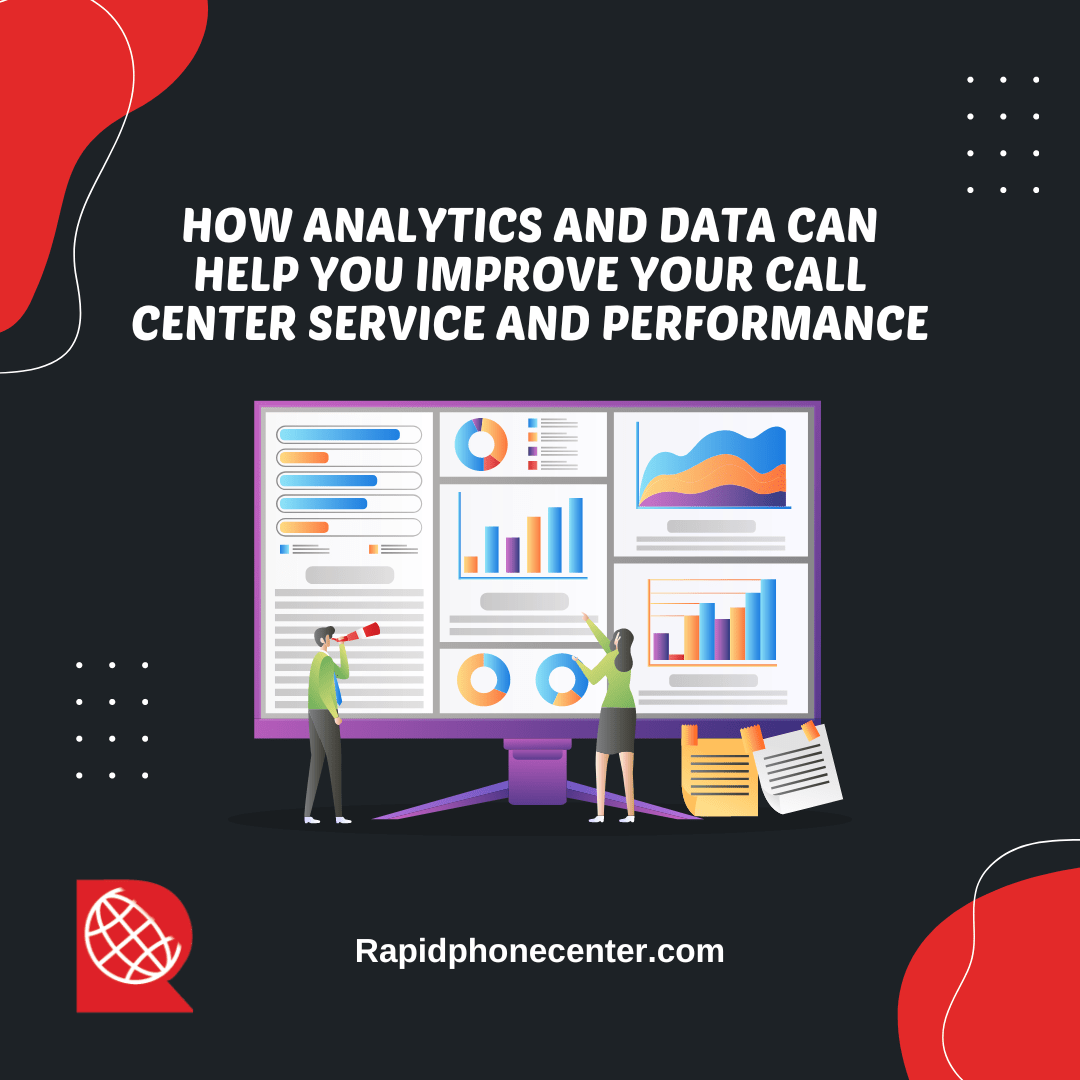How Analytics and Data Can Help You Improve Your Call Center Service and Performance

How Analytics and Data Can Help You Improve Your Call Center Service and Performance
Do you want to know how analytics and data can help you have a deeper understanding of what your customers are thinking, and how you can improve your service and performance? If so, you need to use analytics and data to gain valuable insights and take action.
Analytics and data are the key to understanding and optimizing your call center operations and customer experience.
They can help you measure and improve various aspects of your call center, such as:
- Call center efficiency and productivity. Analytics and data can help you track and analyze metrics such as call volume, average handle time, first call resolution, and agent utilization. These metrics can help you identify and eliminate bottlenecks, optimize your staffing and scheduling, and increase your call center output and quality.
- Call center effectiveness and profitability. Analytics and data can help you measure and improve metrics such as customer satisfaction, retention, loyalty, and lifetime value. These metrics can help you evaluate and enhance your customer service quality, increase your customer referrals and recommendations, and boost your sales and revenue.
- Call center innovation and differentiation. Analytics and data can help you collect and process customer feedback and data, such as their needs, preferences, opinions, and behaviors. This data can help you understand and anticipate your customer expectations, create and deliver personalized and relevant offers and solutions, and stand out from your competitors.
So, how can you use analytics and data to improve your call center service and performance? Here are some steps and tips that you can follow:
- Step 1: Collect your call center data. The first step is to collect your call center data from various sources, such as call logs, customer interactions, social media, emails, and chat transcripts. You can use tools to collect, verify, and enrich your call center data, and to obtain explicit consent from your customers to use their data, in accordance with data privacy laws like GDPR and CCPA.
- Step 2: Analyze your call center data. The next step is to analyze your call center data using various methods, such as descriptive, diagnostic, predictive, and prescriptive analytics. These methods can help you understand what is happening in your call center, why it is happening, what will happen next, and what you should do about it. You can use tools to analyze your call center data and generate reports and dashboards that can help you visualize and interpret your data.
- Step 3: Act on your call center data. The final step is to act on your call center data based on the insights and recommendations that you get from your analysis. You can use tools to design and implement actions and strategies that can help you improve your call center service and performance, such as creating and delivering personalized and relevant messages and offers to your customers, providing feedback and coaching to your agents, and optimizing your call center processes and workflows.
As you can see, using analytics and data can help you improve your call center service and performance. It can help you increase your call center efficiency and productivity, effectiveness and profitability, and innovation and differentiation.
If you’re interested in using analytics and data to improve your call center service and performance, contact us today and find out how we can help you. We are Rapid Phone Center, your call center of choice. We have the experience, the technology, and the passion to help you grow your business and satisfy your customers.
What are you waiting for? Use analytics and data to improve your call center service and performance today and enjoy the benefits.
Do you have any questions or comments about using analytics and data to improve your call center service and performance? Let us know in the comments section below.




